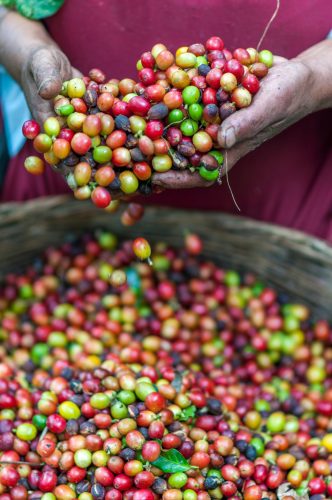The introduction of coffee plants in Costa Rica marked the beginning of a shift in cash crop productions that would later take over from the country’s other revenue-generating crops, such as sugar, cocoa, and tobacco.
Coffee was introduced directly from Ethiopia in 1779. Arabica bean farming then became the main household crop preferred by farmers in Costa Rica.
The government ensures that coffee production is encouraged through offering plots of land to farmers to grow and harvest coffee. Coffee production increased from 158,000 tons in the 80’s to 168,000 tons in the 90’s.
Coffee production was later to be hampered by the falling coffee prices worldwide, and the increasing urbanization and emergence of coffee borers.
Farms available for coffee plantations were later turned into urban residential or industrial areas. Coffee beans from Costa Rica are ranked among the world’s best coffee beans. This article seeks to unravel the life of the coffee cherry pickers in Costa Rica.

The Process Begins
Coffee production in Costa Rica totally relies on cheap, seasonal labor. Many workers are Nicaraguan immigrants. The cultivators are paid as little as U.S. $1.50 – $2.00 for every coffee basket picked.
Coffee picking begins early in the morning. It usually begins from 4-6am, and extends to mid-day. Coffee picking is a family business affair, and all family members get involved to ensure that all the ripe cherries are picked before they become overripe.
For better organization during picking, and to avoid mixing different coffee qualities, each person is assigned a row. The allocation of lines also helps in the reduction of conflicts.
Pickers are paid according to coffee volumes picked. Lunch breaks are provided for, where pickers make their lunch arrangements.
At the end of the day, each picker measures the number of cherries picked. A wooden box is used to measure the coffee volume.
Once all the sacks have been emptied, and cherries measured, each picker is paid according to the volume of cherries picked.
How Much Are Pickers Paid?
In Costa Rica, each picker was getting U.S. $3.50 for each 100 pounds of cherries that they picked in 2015. It wasn’t enough to feed their families well then, and it’s doubtful that much has changed today.
Nearly a third of Costa Rica’s workforce is employed in the coffee industry. Coffee farming in Costa Rica is a way of life.
Apart from the government’s effort to increase coffee production, other organizations like Costa Rican Coffee Institute (ICAFE) plays a key role in providing farm resources and education in agronomy, thus improving profitability.
Other private organizations have also helped set up farmer communities through which collective efforts are put in place to help farmers improve their productivity.
The communities also help the farmers access export markets at competitive prices. Traditionally, farming plantations and practices are usually passed down from one generation to another. The practice hinders adoption of new farming methods by the farmers, leading to low productivity.
Through collaboration between the government and private organizations, proper plans are being put in place to ensure that coffee pickers earn a decent and profitable life from their farming activities.